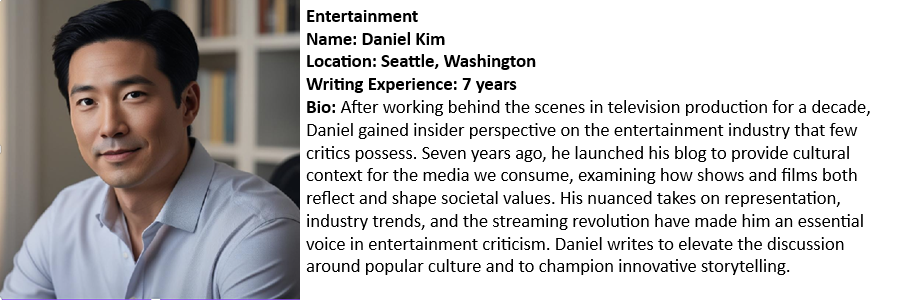Introduction to the Hero’s Journey
Joseph Campbell, a U.S. mythologist, author, and public speaker, has been widely celebrated for his work in the field of comparative mythology and comparative literature. Campbell’s book “The Hero with a Thousand Faces” popularized the idea of the monomyth, also known as the Hero’s Journey. The monomyth describes a timeless narrative structure that cuts across time and space, depicting the underlying themes and motifs that lie within human narratives.
The Hero’s Journey outlines a progression of phases that a character usually follows as he ventures out on his journey, faces challenges, gains a transformation, and then comes back home. The phases, including the Call to Adventure, Trials, and the Return, are deep psychological and existential themes that make audiences identify with the characters and their paths. The work of Campbell demonstrates how these archetypes recur in myths and stories from epics of ages past to today’s films and fiction.
Grasping the Hero’s Journey not only enhances one’s appreciation of films and literature but also provides deep insights into the collective human experience. As we delve deeper into this narrative structure, it is clear that the Hero’s Journey is not just a storytelling framework; it is a reflection of the collective mythology that underpins our comprehension of life and its complexities.
The Phases of the Hero’s Journey
Joseph Campbell’s Hero’s Journey theory describes a set of phases that heroes generally go through in their journey. The monomyth captures a vast array of stories across cultures and eras, a sign of how pervasive its influence has been on narrative. The journey starts with the Call to Adventure, where the hero is introduced to a mission or test that calls to action. It is a pivotal step that sets the story in motion and invites the viewers into a process of transformation.
Following the call, the hero is often faced with Refusal of the Call, in which doubts and fears hold them back from accepting. Internal conflict adds to the richness of the character and mirrors the human tendency to hesitate when presented with overwhelming challenges. The story then proceeds to the Meeting with the Mentor, where a guiding character is introduced who shares words of wisdom and tools to aid the journey that is to come. The mentorship is a crucial part of the hero’s training and empowerment.
Then the hero passes through the Threshold, moving from the normal world into the world of adventure, where unseen dangers lie. The Threshold stage reveals the hero’s earliest weaknesses, paving the way to development. The next phases are Tests, Allies, and Enemies and the Approach to the Inmost Cave, where the hero encounters challenges and allies, building to a turning-point battle represented by the Ordeal. The hero confronts his greatest terror here, where there is dramatic character development.
The path of development takes us through different phases to the Return with the Elixir, wherein the hero returns with new power or information to his or her society. The culmination of life-altering growth and transformation resonates within the audience, enhancing the emotional impact of the narrative. The films “Star Wars” and novels like “The Lord of the Rings” are just a few examples of the phases demonstrated by Campbell’s model of the monomyth.
Impact of the Hero’s Journey on Popular Culture
The Hero’s Journey, or the monomyth, has greatly influenced the literary and cinematic landscape of today, with famous authors and filmmakers alike drawing upon the structure to captivate audiences. The archetypes of the Hero’s Journey have been used by authors and directors to craft appealing, relatable heroes. The masterful application of the Hero’s Journey by author J.R.R. Tolkien in his epic novel “The Lord of the Rings” is a notable case in point. The journey of Frodo Baggins from a seemingly normal hobbit to a ring-bearer is a quintessential presentation of the phases of the monomyth and a demonstration of the complex mechanisms of development, conflict, and resolution that appeal to readers.
Likewise, George Lucas’s “Star Wars” franchise exemplifies the influence of the Hero’s Journey on contemporary film. Luke Skywalker’s character embodies the dilemmas and victories stipulated by Joseph Campbell’s theory, demonstrating not just personal transformation but also a collective search for identity and mission. Its infusion into popular narratives has helped develop deep storytelling techniques that entertain audiences of varied ages. Most filmmakers and authors today deliberately embed the monomyth framework into their stories, making them resonate with the psychological imperatives of transformation and continuation.
Furthermore, the Hero’s Journey has entered into a range of different genres, from science fiction to fantasy, simply because its power to create emotional resonance and evoke empathy has been acknowledged by creators. Blockbusters “Harry Potter” films and “The Lion King” are just a couple of examples of how the monomyth not just entertains but also resonates with deep human experiences, touching upon themes of adversity, mentorship, and discovery. As contemporary storytellers keep finding inspiration from Campbell’s work, the Hero’s Journey continues to serve as a precious blueprint, guaranteeing that its power over today’s popular culture will run deep into the future.
Hero’s Journey in Contemporary Storytelling
The Hero’s Journey, a narrative structure popularized by Joseph Campbell, remains widely applicable to modern-day storytelling. The majority of authors, filmmakers, and creators today include its phases within their own work, developing rich, evocative narratives that speak to human nature. With the advent of new themes and genres in modern times, the Hero’s Journey has evolved, keeping its core framework but introducing new ways of interpreting it. In modern-day films and novels, heroes are frequently shown to experience personal transformations that reflect the timeless phases of that monomyth. Examples of films like “Star Wars” and “The Lord of the Rings” trace the path of the Hero’s Journey through the development of the character and his battle against overwhelming obstacles. These stories strike a chord because they deal with universally familiar themes of heroism, sacrifice, and identity. Last but not least, the fragmentation of the story often enables multiple protagonists to embody elements of the hero, expanding the story’s range but keeping to Campbell’s archetypes.
Nevertheless, the use of the Hero’s Journey has not been free of criticism. There are those who claim that its classical structure can restrict the range of narratives, especially in the portrayal of subjects from diverse backgrounds and cultures. Critics point to the necessity of new models of storytelling that are open to varied visions, with the suggestion that the monomyth can act as a map but not a formula to be followed. However, with narratives diversifying, the Hero’s Journey is still a useful tool, one that can be used to fit individual experience and ambitions.
In summary, the Hero’s Journey remains a driving influence on contemporary storytelling, exemplifying its strength and versatility in captivating audiences. Through the application of its elements, storytellers are able to tell stories that connect with a broad spectrum of experience, keeping the monomyth a part of contemporary storytelling to this day.
Introduction to the Hero’s Journey
Joseph Campbell, a U.S. mythologist, author, and public speaker, has been widely celebrated for his work in the field of comparative mythology and comparative literature. Campbell’s book “The Hero with a Thousand Faces” popularized the idea of the monomyth, also known as the Hero’s Journey. The monomyth describes a timeless narrative structure that cuts across time and space, depicting the underlying themes and motifs that lie within human narratives.
The Hero’s Journey outlines a progression of phases that a character usually follows as he ventures out on his journey, faces challenges, gains a transformation, and then comes back home. The phases, including the Call to Adventure, Trials, and the Return, are deep psychological and existential themes that make audiences identify with the characters and their paths. The work of Campbell demonstrates how these archetypes recur in myths and stories from epics of ages past to today’s films and fiction.
Grasping the Hero’s Journey not only enhances one’s appreciation of films and literature but also provides deep insights into the collective human experience. As we delve deeper into this narrative structure, it is clear that the Hero’s Journey is not just a storytelling framework; it is a reflection of the collective mythology that underpins our comprehension of life and its complexities.
The Phases of the Hero’s Journey
Joseph Campbell’s Hero’s Journey theory describes a set of phases that heroes generally go through in their journey. The monomyth captures a vast array of stories across cultures and eras, a sign of how pervasive its influence has been on narrative. The journey starts with the Call to Adventure, where the hero is introduced to a mission or test that calls to action. It is a pivotal step that sets the story in motion and invites the viewers into a process of transformation.
Following the call, the hero is often faced with Refusal of the Call, in which doubts and fears hold them back from accepting. Internal conflict adds to the richness of the character and mirrors the human tendency to hesitate when presented with overwhelming challenges. The story then proceeds to the Meeting with the Mentor, where a guiding character is introduced who shares words of wisdom and tools to aid the journey that is to come. The mentorship is a crucial part of the hero’s training and empowerment.
Then the hero passes through the Threshold, moving from the normal world into the world of adventure, where unseen dangers lie. The Threshold stage reveals the hero’s earliest weaknesses, paving the way to development. The next phases are Tests, Allies, and Enemies and the Approach to the Inmost Cave, where the hero encounters challenges and allies, building to a turning-point battle represented by the Ordeal. The hero confronts his greatest terror here, where there is dramatic character development.
The path of development takes us through different phases to the Return with the Elixir, wherein the hero returns with new power or information to his or her society. The culmination of life-altering growth and transformation resonates within the audience, enhancing the emotional impact of the narrative. The films “Star Wars” and novels like “The Lord of the Rings” are just a few examples of the phases demonstrated by Campbell’s model of the monomyth.
Impact of the Hero’s Journey on Popular Culture
The Hero’s Journey, or the monomyth, has greatly influenced the literary and cinematic landscape of today, with famous authors and filmmakers alike drawing upon the structure to captivate audiences. The archetypes of the Hero’s Journey have been used by authors and directors to craft appealing, relatable heroes. The masterful application of the Hero’s Journey by author J.R.R. Tolkien in his epic novel “The Lord of the Rings” is a notable case in point. The journey of Frodo Baggins from a seemingly normal hobbit to a ring-bearer is a quintessential presentation of the phases of the monomyth and a demonstration of the complex mechanisms of development, conflict, and resolution that appeal to readers.
Likewise, George Lucas’s “Star Wars” franchise exemplifies the influence of the Hero’s Journey on contemporary film. Luke Skywalker’s character embodies the dilemmas and victories stipulated by Joseph Campbell’s theory, demonstrating not just personal transformation but also a collective search for identity and mission. Its infusion into popular narratives has helped develop deep storytelling techniques that entertain audiences of varied ages. Most filmmakers and authors today deliberately embed the monomyth framework into their stories, making them resonate with the psychological imperatives of transformation and continuation.
Furthermore, the Hero’s Journey has entered into a range of different genres, from science fiction to fantasy, simply because its power to create emotional resonance and evoke empathy has been acknowledged by creators. Blockbusters “Harry Potter” films and “The Lion King” are just a couple of examples of how the monomyth not just entertains but also resonates with deep human experiences, touching upon themes of adversity, mentorship, and discovery. As contemporary storytellers keep finding inspiration from Campbell’s work, the Hero’s Journey continues to serve as a precious blueprint, guaranteeing that its power over today’s popular culture will run deep into the future.
Hero’s Journey in Contemporary Storytelling
The Hero’s Journey, a narrative structure popularized by Joseph Campbell, remains widely applicable to modern-day storytelling. The majority of authors, filmmakers, and creators today include its phases within their own work, developing rich, evocative narratives that speak to human nature. With the advent of new themes and genres in modern times, the Hero’s Journey has evolved, keeping its core framework but introducing new ways of interpreting it. In modern-day films and novels, heroes are frequently shown to experience personal transformations that reflect the timeless phases of that monomyth. Examples of films like “Star Wars” and “The Lord of the Rings” trace the path of the Hero’s Journey through the development of the character and his battle against overwhelming obstacles. These stories strike a chord because they deal with universally familiar themes of heroism, sacrifice, and identity. Last but not least, the fragmentation of the story often enables multiple protagonists to embody elements of the hero, expanding the story’s range but keeping to Campbell’s archetypes.
Nevertheless, the use of the Hero’s Journey has not been free of criticism. There are those who claim that its classical structure can restrict the range of narratives, especially in the portrayal of subjects from diverse backgrounds and cultures. Critics point to the necessity of new models of storytelling that are open to varied visions, with the suggestion that the monomyth can act as a map but not a formula to be followed. However, with narratives diversifying, the Hero’s Journey is still a useful tool, one that can be used to fit individual experience and ambitions.
In summary, the Hero’s Journey remains a driving influence on contemporary storytelling, exemplifying its strength and versatility in captivating audiences. Through the application of its elements, storytellers are able to tell stories that connect with a broad spectrum of experience, keeping the monomyth a part of contemporary storytelling to this day.


